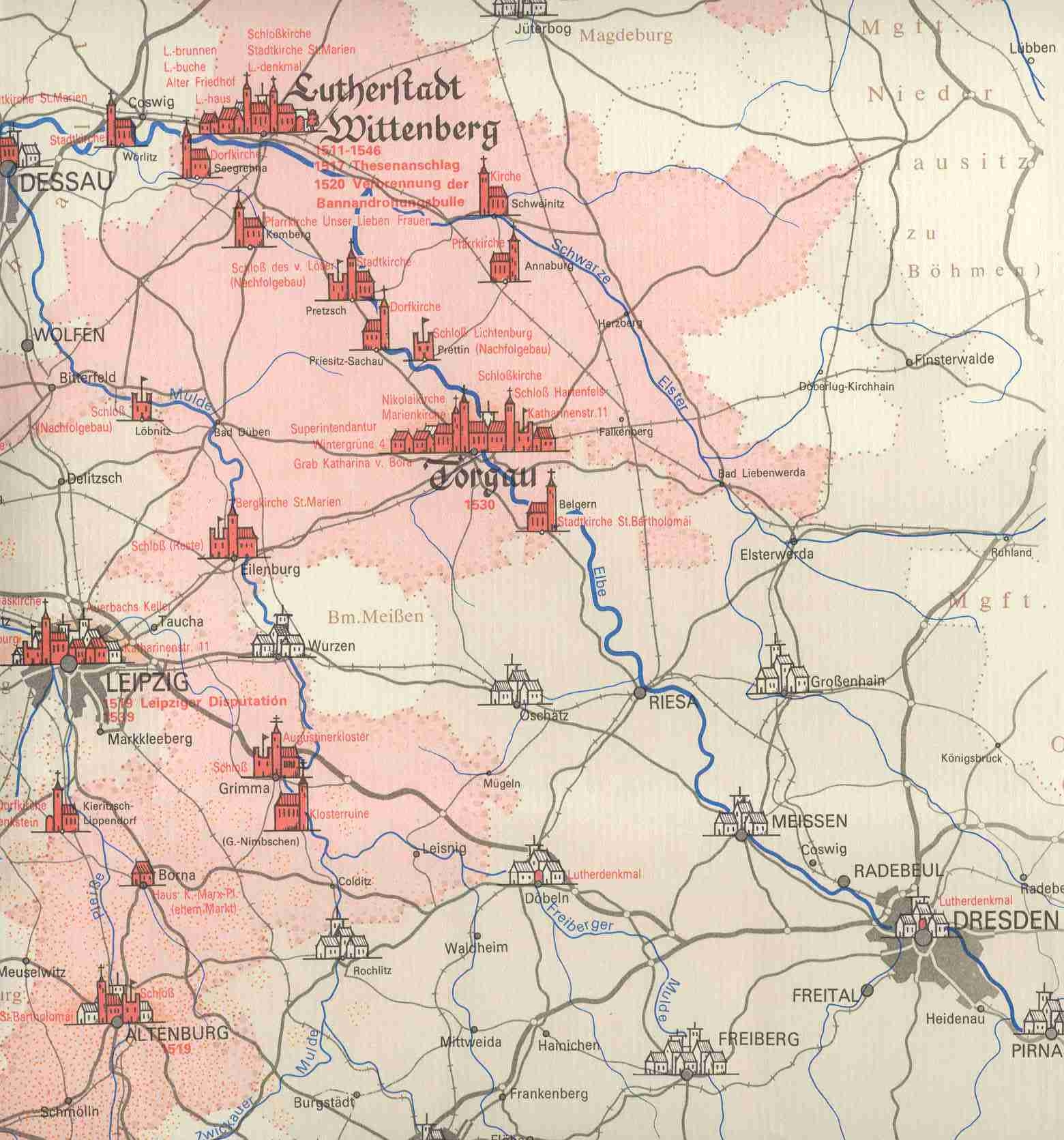
The Reformation
I put up this web page only to try to talk about how Martin Remus of Grossenhain probably related to the reformation. Martin Remus the elder was the Lutheran kantor in Grossenhain. In that era the title kantor could designate a choirmaster or teacher.
Click here for more on nearby Wittenburg where Martin Luther lived and taught.
Grossenhain was not the first parish to change from Catholicism to Lutheranism. As shown by the following map, many parts of Saxony made that change earlier:

The pink churches above had accepted Lutheranism by 1525 (note it does not include Grossenhain shown by a white church).
But when Grossenhain made the change from Catholic to Lutheran, there was important work to do. First there was the matter of education. Under the Catholic view prior to their Council of Trent (December 13, 1545, and December 4, 1563), the common people did not need to read or write. Only the clerics needed to do so since only the clerics needed to understand the Bible (then only in Latin) as their role was to explain the Bible to the common people. Luther took the view that all people needed to read the Bible so they could understand the truth of God without a middleman. Hence all Christians needed to read thus requiring schools that taught reading and writing to all people. Luther translated the Bible into German so that all could read it in German. There was still a need for Latin for communication but not necessarily for the education of the people. This was a major change that effected the Latin School in Grossenhain in Martin's time.
Another major change was that the worship service needed to be revised to reflect the Lutheran view and to put it into German rather than Latin so that the common people could understand it. Also, Luther loved music so he wanted music introduced into the service including communal singing. As a Kantor, Martin Remus could have played a part in all of this. Especially since Jacob Fabricius who headed up this process was in nearby
Meissen.I might note that the Council of Trent and subsequent councils changed the Catholic position on many of the above items. Consequently the Catholic Church has advocated and provided religious and secular education for the common people in the local languages since the Council of Trent. And the congregation now plays a more active role in the services now conducted in the local language. Thus many of the issues and practices that led to the Reformation no longer divide the Lutherans and Catholics.
The Rem(us) of Augsburg was also highly involved in the Reformation, on both sides.
Click here for details of Catholic Reformer Bishop Remus. And Augsburger Wilhelm Rem's brother-in-law Jakob Fugger might have been a major cause of the Reformation. Click here for those details.
Please send any queries to Bill Remus at
September 24, 2011